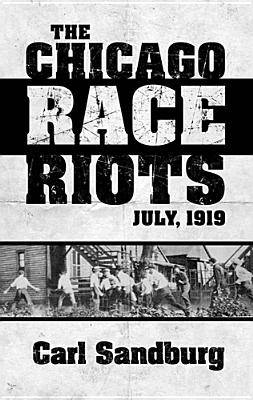
- Afhalen na 1 uur in een winkel met voorraad
- Gratis thuislevering in België vanaf € 30
- Ruim aanbod met 7 miljoen producten
- Afhalen na 1 uur in een winkel met voorraad
- Gratis thuislevering in België vanaf € 30
- Ruim aanbod met 7 miljoen producten
Zoeken
Omschrijving
Nearly a century ago, an African-American teenager crossed an invisible line of segregation at a Chicago beach and paid with his life. The incident set off days of violence that resulted in several dozen deaths and hundreds of injuries as well as the destruction of homes and businesses. This contemporary account was written by Pulitzer Prize-winning author and poet Carl Sandburg, who reported on the riots for the Chicago Daily News.
Few other journalists of the era explored the issues of discrimination in housing, politics, and organized labor that fueled the 1919 riots in Chicago and across America. Sandburg offered readers rare insights into the plight of black Americans, whose voices were seldom heard in white publications. His in-depth reports on the living and working conditions of Chicago's black community, written before and after the riots, illuminate the social conditions that fostered racial tensions.
Few other journalists of the era explored the issues of discrimination in housing, politics, and organized labor that fueled the 1919 riots in Chicago and across America. Sandburg offered readers rare insights into the plight of black Americans, whose voices were seldom heard in white publications. His in-depth reports on the living and working conditions of Chicago's black community, written before and after the riots, illuminate the social conditions that fostered racial tensions.
Specificaties
Betrokkenen
- Auteur(s):
- Uitgeverij:
Inhoud
- Aantal bladzijden:
- 96
- Taal:
- Engels
Eigenschappen
- Productcode (EAN):
- 9780486498454
- Verschijningsdatum:
- 21/02/2013
- Uitvoering:
- Paperback
- Formaat:
- Trade paperback (VS)
- Afmetingen:
- 135 mm x 211 mm
- Gewicht:
- 113 g

Alleen bij Standaard Boekhandel
+ 24 punten op je klantenkaart van Standaard Boekhandel
Beoordelingen
We publiceren alleen reviews die voldoen aan de voorwaarden voor reviews. Bekijk onze voorwaarden voor reviews.








